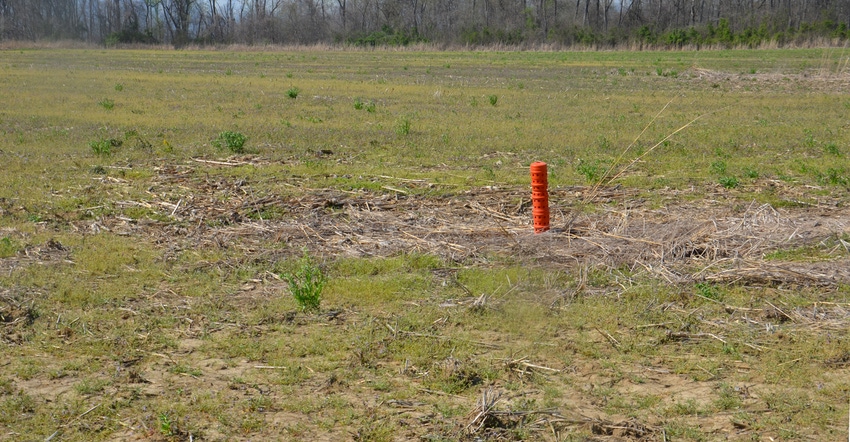
Bill Johnson says the two herbicides most likely to be hard to get this spring are glyphosate, the active ingredient in Roundup, and glufosinate, the active ingredient in Liberty. If you’re forced to stretch supplies of these herbicides, you may find yourself open to other options that you might not consider in a normal year.
Some of those decisions may crop up when you��’re deciding how to handle emerged weeds before planting. Even if you normally spray a specific burndown recipe, think about other combinations or even other methods this year, says Johnson, Purdue University Extension weed control specialist.
Spray or till? You could spray green vegetation in the fall-tilled, stale seedbed field pictured above or you could till it before planting to remove vegetation. How would Johnson advise comparing these options?
“First, ask yourself how much glyphosate you have,” Johnson says. “It’s going to be a common question when you get ready to make decisions related to weed control this year.”
“Note this field is relatively level, with little slope. It isn’t highly erodible land, so spring tillage is an option. If glyphosate supplies are tight, I would likely opt to till this field and take care of weeds and green vegetation mechanically.
“Save the glyphosate for later in the season when you really need it for a postemergence application.”
If this was a long-term no-till field and not a situation where it appears tillage would interfere with the conservation program in the field, you might think harder about tilling vs. no-tilling. Some people don’t want to disturb the soil once they have no-till established.
Terminating cover crops. “How much glyphosate do you have?” Johnson begins. “I’m asking the same question again, even though a typical strategy is burning down a cereal rye cover crop with glyphosate.”
In a normal situation, where you were going to terminate cereal rye with glyphosate, time the application appropriately. No-tillers often talk about not spraying cover crop grasses until they’ve mowed their yard for the second time. They want cereal rye to be actively growing. Then, they want a day with moderate, not too cool, temperatures. Some also restrict spraying to the middle of the day.

If you are terminating this cereal rye (pictured above) ahead of soybeans, glyphosate plus a broad-spectrum residual herbicide is an option if you have enough glyphosate for the season, Johnson says. If not, there are other burndown options.
“You could go with Gramoxone and Sharpen plus a residual herbicide ahead of soybeans to burn down the cereal rye if it is small, say 6 inches tall or less,” Johnson suggests.
That way, you could save glyphosate for postemergence applications over glyphosate-resistant soybeans where glyphosate might be needed to control grasses and some key broadleaf weeds.
About the Author(s)
You May Also Like




